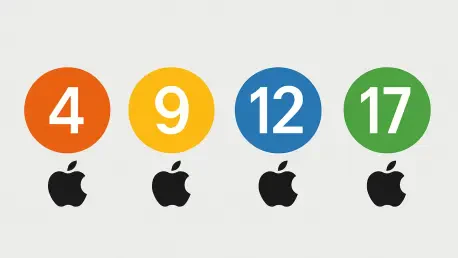Apple’s age-rating system, recently revamped, embodies a proactive step toward safeguarding children within the digital landscape. By introducing precise age categories and leveraging advanced monitoring tools, Apple addresses growing concerns about online safety and app content suitability. This strategic initiative ignites interest in understanding its implications on developers, parents, and the broader app ecosystem, marking a transformative moment in digital child safety efforts.
Addressing Online Safety Challenges
A confluence of increasing legislative pressures and heightened awareness of digital risks has catalyzed a shift in Apple’s approach, driving the expansion of its age-rating framework. This evolution aligns with the demands for more precise protective measures, enabling parents to better discern the appropriateness of app content. Developers are urged to adapt swiftly, embracing evolving standards to maintain app availability and relevance. The challenges posed by inaccurate age verification and the need for a balance between compliance and visibility accentuate the importance of Apple’s move in reshaping digital standards.
Regional Impacts and Regulatory Demands
As Apple’s age-rating system permeates the global market, its effectiveness varies significantly across different regions, influenced by distinct regulatory landscapes and cultural attitudes. In territories like Europe, strict data protection regulations such as GDPR intensify the obligations on app developers, dictating stringent adherence to privacy norms. The adaptation of Apple’s system must incorporate these regional mandates, ensuring that developers can successfully navigate diverse legal and ethical expectations.
Navigating Developer Dynamics
Within the developer community, the revised age-rating system introduces both opportunities and dilemmas. Enhanced parental controls and user experience customization are potential avenues for developers seeking to maintain app visibility in this new landscape. Integration of Apple’s API facilitates personalized content delivery, although self-regulation remains contentious, demanding vigilance in aligning app offerings with age-specific criteria. The interplay of innovation and regulatory compliance continues to shape developer strategies, underscoring the imperative to stay ahead in a competitive digital marketplace.
Strategic Insights and Future Considerations
Reflecting on the evolution of Apple’s age-rating system, its significance resides in forging a more secure digital environment for young users. The transition empowered parental oversight and reaffirmed professional responsibility on developers, opening dialogue on future enhancements. Looking ahead, integrating AI-driven technologies presents new avenues for age verification and content curation, guiding developers in overcoming challenges while enriching the user experience. Ultimately, strategic foresight and adaptability will determine the success of stakeholders in fostering a robust, child-safe digital ecosystem.









